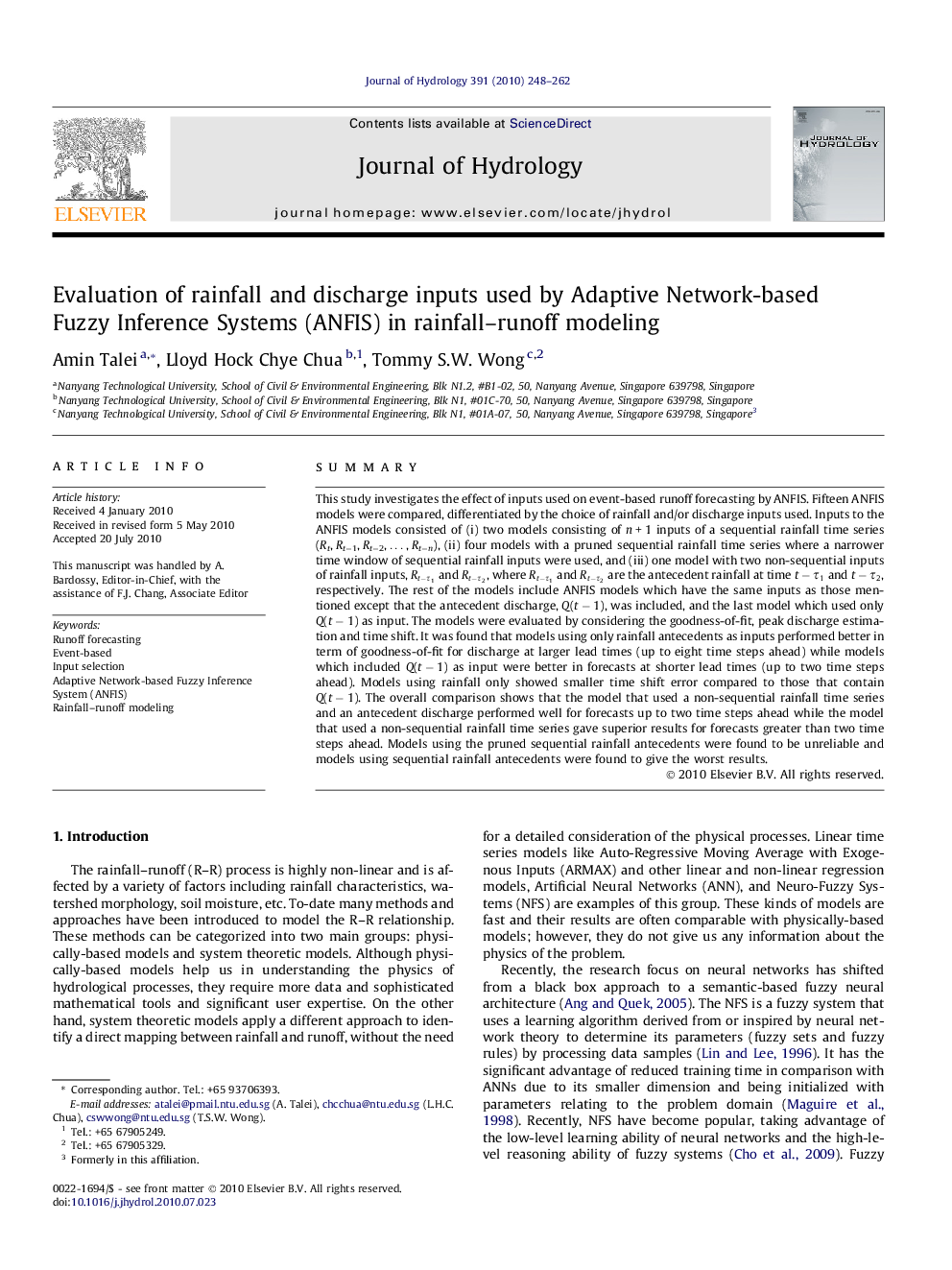| کد مقاله | کد نشریه | سال انتشار | مقاله انگلیسی | نسخه تمام متن |
|---|---|---|---|---|
| 4578080 | 1630045 | 2010 | 15 صفحه PDF | دانلود رایگان |

SummaryThis study investigates the effect of inputs used on event-based runoff forecasting by ANFIS. Fifteen ANFIS models were compared, differentiated by the choice of rainfall and/or discharge inputs used. Inputs to the ANFIS models consisted of (i) two models consisting of n + 1 inputs of a sequential rainfall time series (Rt, Rt−1, Rt−2, … , Rt−n ), (ii) four models with a pruned sequential rainfall time series where a narrower time window of sequential rainfall inputs were used, and (iii) one model with two non-sequential inputs of rainfall inputs, Rt-τ1Rt-τ1 and Rt-τ2Rt-τ2, where Rt-τ1Rt-τ1 and Rt-τ2Rt-τ2 are the antecedent rainfall at time t-τ1t-τ1 and t-τ2t-τ2, respectively. The rest of the models include ANFIS models which have the same inputs as those mentioned except that the antecedent discharge, Q(t − 1), was included, and the last model which used only Q(t − 1) as input. The models were evaluated by considering the goodness-of-fit, peak discharge estimation and time shift. It was found that models using only rainfall antecedents as inputs performed better in term of goodness-of-fit for discharge at larger lead times (up to eight time steps ahead) while models which included Q(t − 1) as input were better in forecasts at shorter lead times (up to two time steps ahead). Models using rainfall only showed smaller time shift error compared to those that contain Q(t − 1). The overall comparison shows that the model that used a non-sequential rainfall time series and an antecedent discharge performed well for forecasts up to two time steps ahead while the model that used a non-sequential rainfall time series gave superior results for forecasts greater than two time steps ahead. Models using the pruned sequential rainfall antecedents were found to be unreliable and models using sequential rainfall antecedents were found to give the worst results.
Journal: Journal of Hydrology - Volume 391, Issues 3–4, 24 September 2010, Pages 248–262